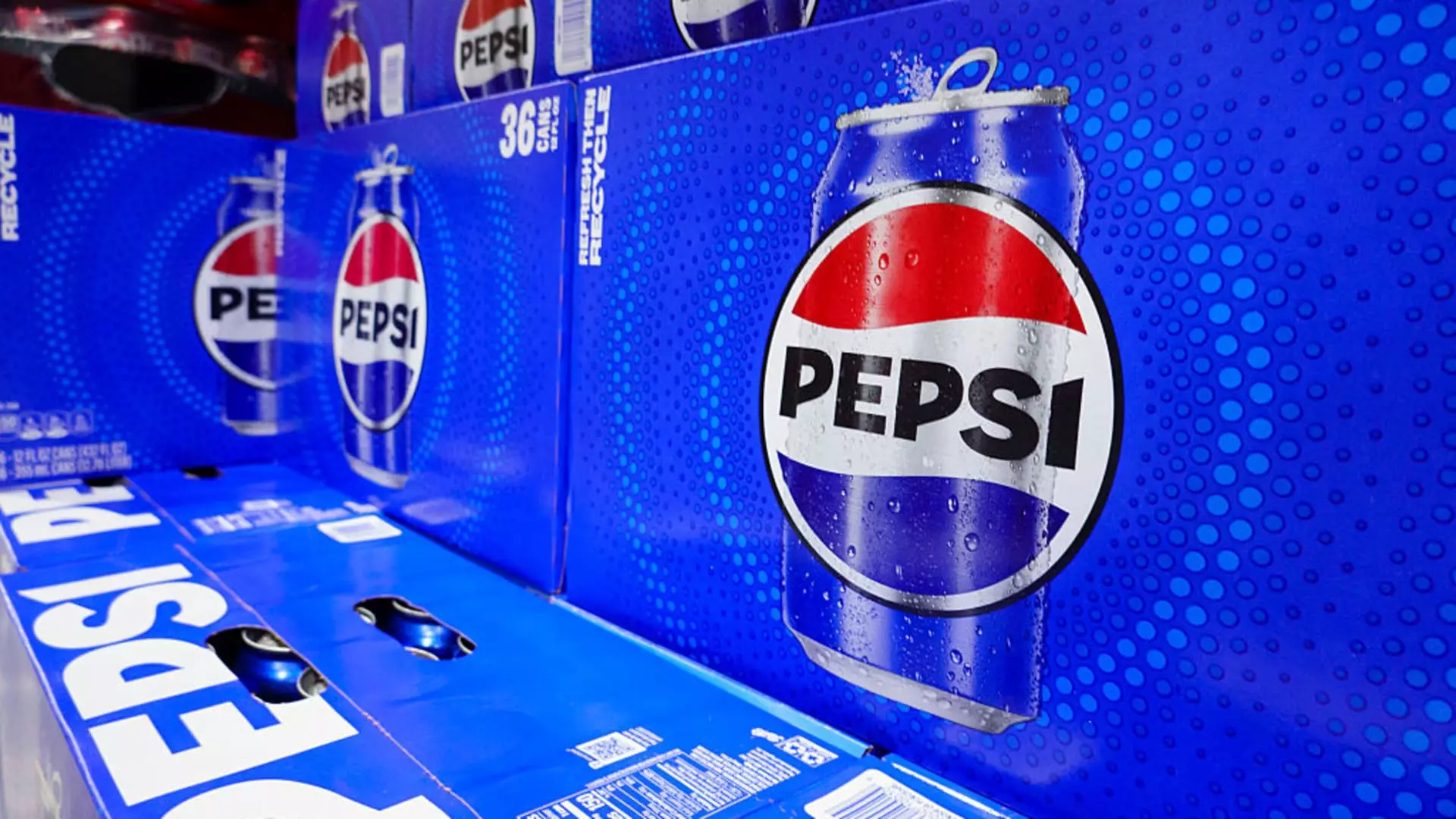PepsiCo’s recent financial report offers a veneer of optimism, but a deeper analysis exposes significant flaws lurking beneath the surface. While the company claims to have topped expectations and forecasts a rebound driven by strategic initiatives, the reality reveals a fragile footing in an increasingly volatile market. Their assertion that demand will “rebound” appears overly optimistic, considering the persistent decline in both North American and global consumer appetite for traditional snack foods and sodas. It is troubling that the company glosses over the underlying softness in volume, which signals declining consumer loyalty and shifting preferences that their current strategies may be ill-equipped to address. Rallying around minor product relaunches and cost-cutting efforts, PepsiCo appears to be more reactive than proactive—hiking on short-term fixes while neglecting the structural challenges they face.
Illusory Growth: Hitting Expectations, Not Goals
While PepsiCo reports beats on earnings and revenue, these figures mask a disturbing reality. Net income has plummeted from last year’s heights, and organic revenue growth—while seemingly positive—is disappointing given the company’s past ambitions. The company predicts it will hit the low end of its long-term organic growth target of 4% to 6%, but such forecasts are little more than wishful thinking. The reliance on modest growth projections indicates a recognition that their core markets are stagnating, and their attempts to diversify are insufficient to counteract the trend. The fact that volume across key segments continues to shrink or stagnate suggests that Pepsi is merely treading water rather than innovating sustainably.
Surface-Level Innovation Masking Deep-Rooted Issues
Much of Pepsi’s recent strategy hinges on bland “trends”: pushing healthier snacks, multicultural offerings, and product relaunches. These efforts are superficially promising but lack true transformative power. Leaning into protein and multicultural products feels more like a desperate attempt to chase fleeting fads rather than nurturing genuine consumer loyalty. Their focus on in-store availability and aggressive cost-cutting—such as shuttering plants and streamlining logistics—appears pragmatic but ultimately shortsighted if the demand persists in shrinking. These moves risk undermining the very brand stability Pepsi claims to want to restore. The stalemate reflects a fundamental misreading of consumer behavior: people are increasingly scrutinizing ingredients, seeking authenticity, and turning away from processed foods and sugary drinks, a shift that Pepsi seems ill-prepared to lead effectively.
Cost-Cutting as a Defensive Strategy or a Sign of Weakness?
While trimming costs can sometimes bolster margins, Pepsi’s aggressive shutdowns and efficiency measures risk undermining the company’s innovative capacity and long-term growth. Closing plants and optimizing logistics may improve short-term profitability, but at what cost to product quality, employee morale, and brand reputation? Such a defensive approach signals not strength but vulnerability—a recognition that their current market approach is no longer sustainable. Treading a fine line between necessary operational efficiencies and destructive austerity, Pepsi risks alienating consumers who seek authenticity over austerity. Furthermore, their vague plans to re-allocate marketing funds hint at anxiety rather than confidence: are they gambling on better returns, or merely diverting attention from deeper structural issues?
The Illusion of Optimism in a Chaotic Market Environment
Throughout the report, Pepsi’s leadership maintains a cautiously optimistic stance, but this stance is increasingly divorced from market realities. Economic volatility, changing tariffs, and a cautious consumer base are realities they cannot wish away. Their full-year outlook, based on weak signals and defensive tactics, may prove overly optimistic or even misleading. The suspicion lingers that Pepsi’s leadership is clinging to old assumptions—holding onto the idea that traditional marketing, cost-cutting, and minor product tweaks will carry them through a landscape that demands bold, transformative change. As consumer preferences shift rapidly, the risk is that Pepsi’s current approach is more about survival than thriving, leaving them vulnerable to more innovative competitors and disruptive startups eager to capitalize on a declining giant in slow decline.
In sum, PepsiCo’s latest financials paint a picture of a company desperately patching holes in its boat while navigating an increasingly treacherous market. Their focus on short-term gains, superficial product innovation, and cost-cutting strategies mask the deeper malaise: a brand that has yet to meaningfully adapt to modern consumer expectations or address the fundamental shifts away from traditional processed foods and sugary drinks. If they continue on this path, their optimism risks degenerating into a fragile facade hiding a future of growth stagnation and irrelevance.

